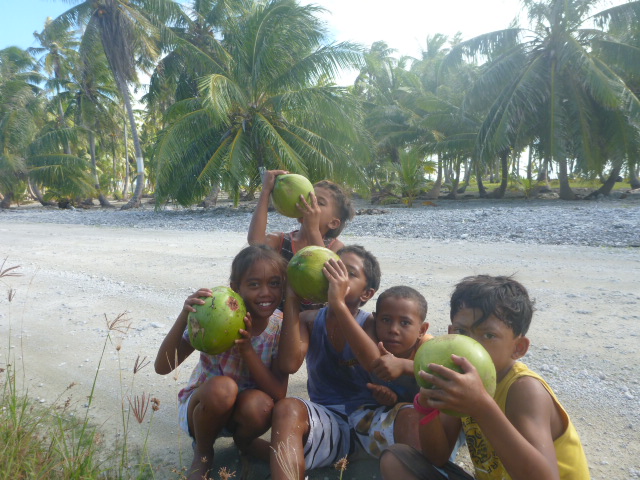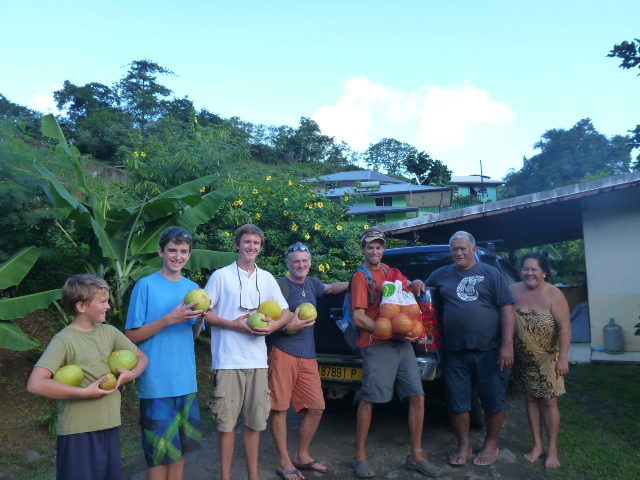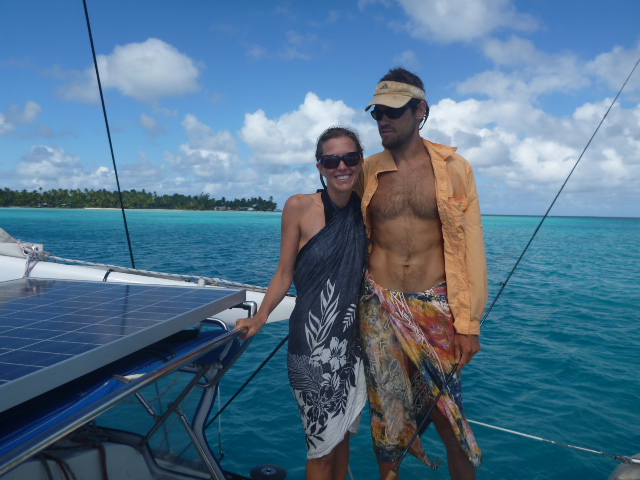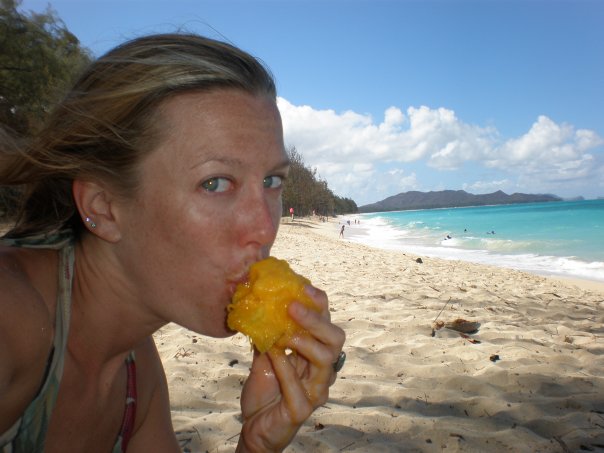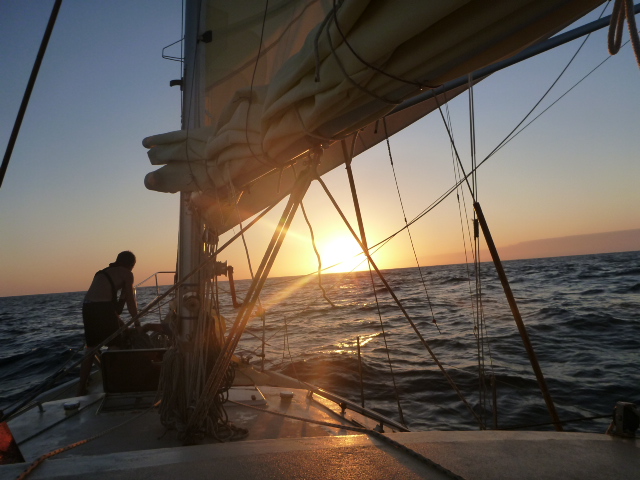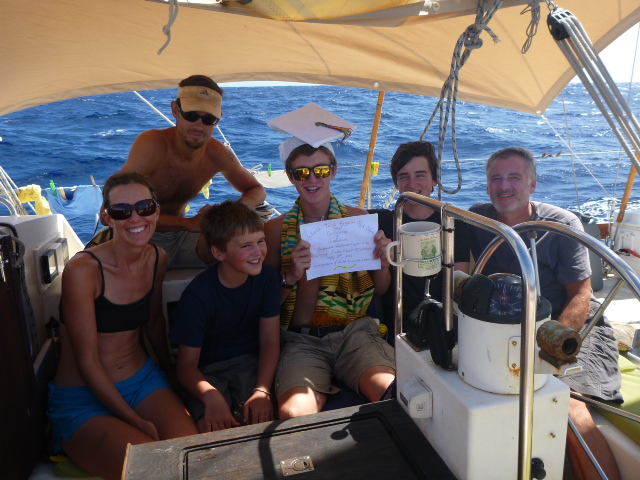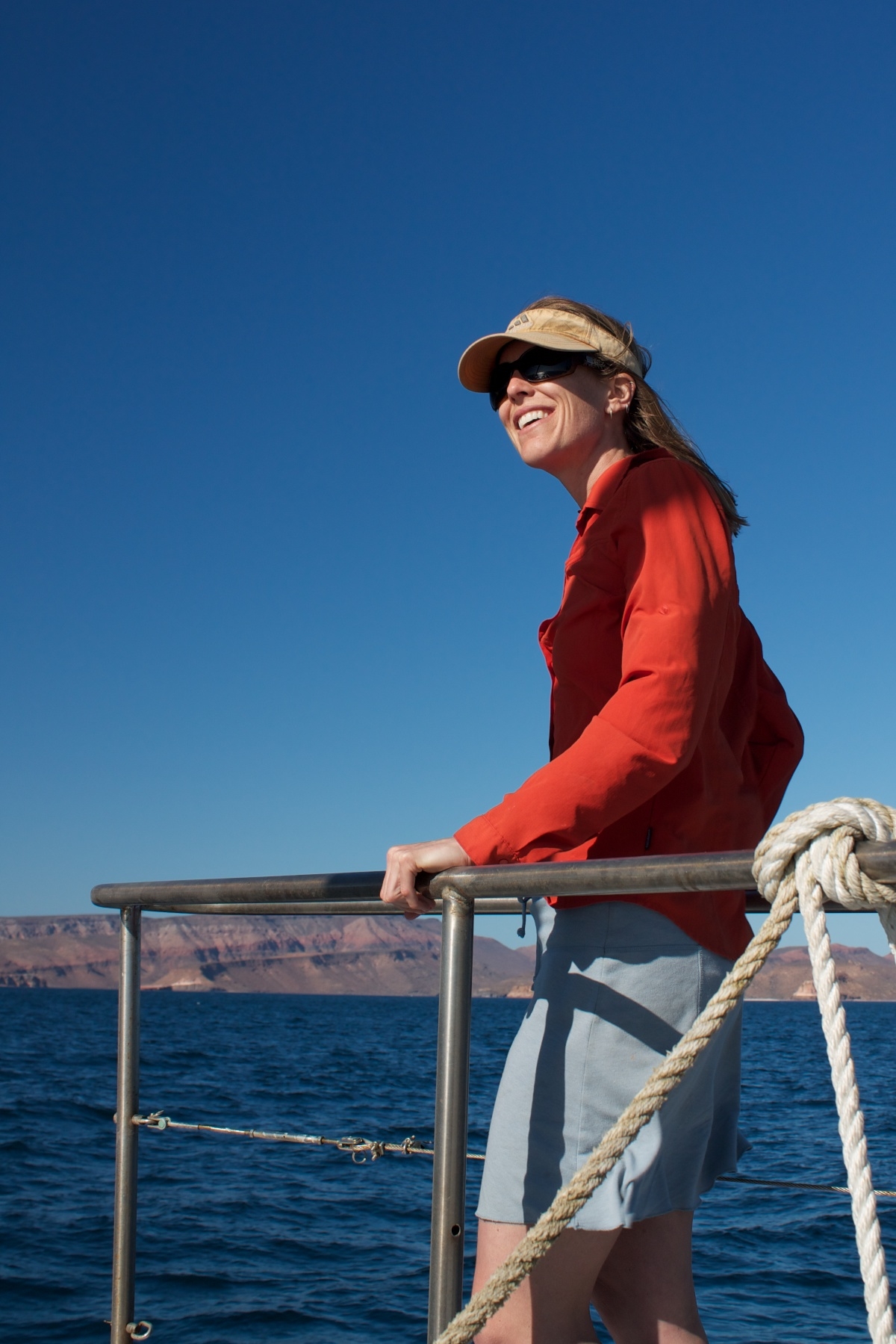Playing Volleyball in Paradise
Something you might not know about our trip: I played volleyball in small villages across the South Pacific. As a lifelong player, I never expected to find games in the middle of the ocean. Turns out that volleyball is a popular sport in Polynesia. This month, Volleyball Magazine published this article I wrote about playing in paradise.
Click here to see the full article with pictures, or read on below.
After 33 days sailing across the ocean, few things sound better than an ice-cold drink, a cheeseburger, and a fresh, juicy mango for dessert. As our sailboat neared Nuku Hiva in the Marquesas Islands of French Polynesia, the verdant peaks emerged on the horizon like a shimmering green beacon of tropical hope. To my wife and me, land signaled an end to suffering through rice and canned goods, as well as a fresh beginning for shaky legs that had atrophied during 4,000 miles at sea.
Our journey started on the Panama Canal, included a stop in the Marquesas, and eventually took us through 25 islands in the South Pacific. But this is not a story about white sand, blue water, and sailing off into the sunset. What started as a quest for adventure turned into a lesson about friendship, communication, and a redefinition of volleyball, which I have been playing for more than 20 years.
Polynesia is used loosely to describe a huge swath of territory, starting in Hawaii and stretching west for thousands of miles through the tropical latitudes of the South Pacific. My introduction to Polynesian culture came as my wife and I were digesting that first glorious meal back on land and stretching our legs on the back roads of Nuku Hiva. We left town on what we jokingly referred to as a “mission for mangoes.” In broken French, I asked a bulky man standing under a shady grove of fruit trees if he had any mangoes that we could buy. Before we even understood what was happening, our new friend, Noelle, was loading plastic bags with mangoes, grapefruits, guavas, and any other fruit he could find.
Noelle didn’t want any money. He said that he simply wanted to share and to make us feel welcome in his country. We met his family and took a group photo. Before we left, I asked about a few dusty trophies sitting on a shelf.
“Le volley,” he said and asked me if I played.
“I love volleyball,” I said, “but I thought people only played rugby here.”
His eyes brightened, and soon he was telling me about the trophies, his glory days, and the fierce competition between high schools on the islands. Then he disappeared into his family’s small, concrete bungalow and emerged with a red and white sleeveless uniform with the team name “As Patoa” on the back. The garment was faded but obviously well cared for.
“Please take this,” he said. “It is my championship jersey, but it doesn’t fit me anymore.” Honored, I wanted to put it on immediately, but he stopped me. “No, don’t put it on until you are sailing away, so that you can remember me and remember this island.”
It would be a few weeks—and several passages on the open ocean—before I had the chance to put that volleyball uniform to good use. Arriving at a tiny speck of land called Palmerston Atoll, we dropped our sails and anchored several hundred yards offshore. A man in a small motor skiff came by, pulled alongside us, and yelled, “Has anyone been out to see you yet?” I shook my head no, and he raced away.
“What was that about?” I asked my wife.
Palmerston Atoll is part of the Cook Islands, a country comprised of 15 far-flung islands scattered in the middle of the South Pacific. There are no roads and you can walk around the island in about 20 minutes. By tradition, a local family “adopts” every visitor for the duration of his or her stay. And there are only three families on the island. By briefly talking to the man on the skiff, we had inadvertently chosen our family, and they would be our chaperones and home away from home for the next several days.
The man in the skiff returned to our sailboat with a customs official, and soon we were on a tour of the government office, a one-room building with a tin roof. Later I found the family patriarch, Simon, sitting in the sand, mending a long fishing net by hand. I asked him about the island and his life there. When I inquired about recreation, he said that the youth played volleyball on the beach every day around four o’clock. So after a lunch of stewed parrotfish and rice with our new family, I went back to the boat, put on my cherished volleyball uniform, and made my way to the beach to find a game.
I saw four or five young boys throwing a ball back and forth over the net. The court didn’t have any lines and the net was about seven feet high and full of holes. I shrugged my shoulders and joined the game. As the minutes passed and the sun dipped in the sky, I noticed more people emerging from the coconut groves. Soon a group of teenagers and adults stepped onto the court, shooed the little ones away, and picked sides.
There are only 62 people on Palmerston Atoll. There is no airstrip. All of their supplies come by ferry, which only shows up three to four times a year. But despite this isolation, these islanders had learned to play fairly sophisticated volleyball. They passed and ran plays in a way that indicated previous coaching. They argued about legal sets and had someone on the sidelines keeping score. Between games I asked one of the players where they had learned to play, and he said that last year they had gone to play in the South Pacific Games to represent their country, Cook Islands.
I found this theme throughout my travels – courts were uneven, lines non-existent. The nets were tied to coconut trees and telephone poles. But the players were talented, smart, and agile. And they played as a team. I began to see volleyball as a perfect fit for Polynesian culture, which emphasizes the importance of family, community, and the greater good. Volleyball, by its very structure, is more about the collective than the individual. In most effective plays, three people touch the ball. And there are no one-on-one moves like in basketball. No pitchers who start every play like in baseball. The game depends on the collective.
Our last stop in the South Pacific was the Kingdom of Tonga. A small chain of islands north of New Zealand, Tonga has never been colonized. Some people consider it to be “true” Polynesia, a place where people still wear tapas —woven straw mats like skirts for special occasions—and where the deference to family and community dominates everyday life.
We were anchored off Ofu, a small fishing village, when I first met Iloa. He was working construction, carrying 50-pound concrete sacks, two at a time, up to a building site at a nearby eco-resort. Most Tongans speak at least a little English, so I asked him if they played any sports on the island.
“We play volleyball,” he said. “Each day in the evening.” After a pause, he added, “You come tonight?”
With the tropical sun starting to dip in the sky, I hopped in our motorized dinghy and made my way to Ofu. Strolling down Ofu’s small, sandy road, I found Iloa sitting with his extended family in the shade of an awning. Grandparents, parents, and babies were gathered around large bowls of sweet potatoes, cassava, and fried fish. Iloa jumped up without a word and walked inside the house. He emerged with a flat volleyball. He walked into another house and emerged with a net and a pump, both in good condition.
I helped Iloa string up the net on two poles – 10-foot logs that had been anchored into the ground. He carefully wrapped each end of the net around the pole several times and tied the line around a large boulder that was used to keep the pole from moving. The net was just beyond my reach, about eight and a half feet high. “Maybe it’s good,” he said.
Tongans are large people. The youth are big-shouldered, more like linebackers than volleyball players. Their play is straightforward: play fast, hit hard. Repeat. For them, volleyball games seem to be a chance to have fun and mock the players on the losing side. After every point, I heard jeers from the crowd, terse exchanges mixed with a giggle that I had come to think of as typically Tongan – a high-pitched squeal that seemed incongruous for people of their size.
Unfortunately for me, Tongans are also very communal people, which means that they took no pity on a lanky white guy with sea legs and a sunburn. When I heard Iloa yell the word palangi—“foreigner” in Tongan—I knew what was coming next. They were going to set me the ball, and everyone on the opposing team was gong to try to block me. There was definitely some laughing at my expense, but I didn’t mind. Playing volleyball on Ofu gave me a unique insight into Tongan life and an opportunity to learn about their culture as a teammate, not a tourist.
I never intended to play volleyball on our sailing voyage. But my volleyball interactions with Iloa, Noelle, and my adopted family on Palmerston Atoll defined my trip through the South Pacific as clearly as the vibrant coral reefs and the stunning sandy beaches. Volleyball became a universal language. It created a common ground by summoning emotive concepts that all people understand: competition, teamwork, and glory. That first day in paradise, my simple search for a mango had snowballed into a new way of communicating, many new friends, and a new appreciation for my lifelong sport.




